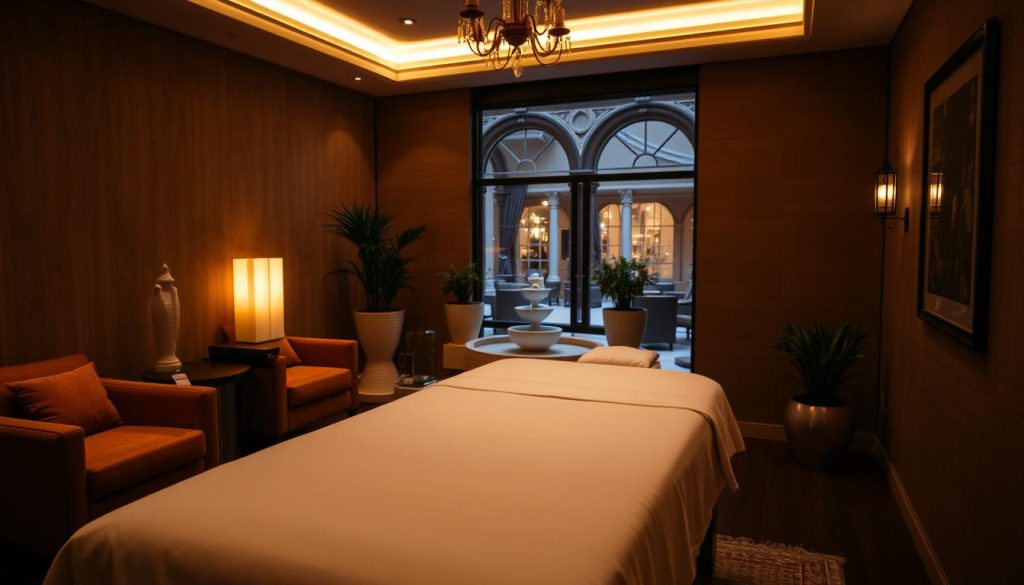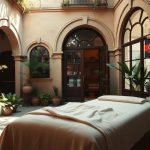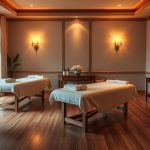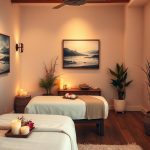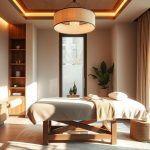Want a simple way to reset your energy that fits your Istanbul routine? On the European Side, trained therapists use methods such as Swedish, deep tissue, trigger point, reflexology, and scalp work to activate your body’s calm response.
Experience a focused session that improves circulation, eases discomfort, and lifts mood without long travel. You get clear guidance on what to book whether you want gentle relaxation or targeted care.
Practical benefits include better posture, less recurring tension, and faster recovery after busy days. Regular visits can support your overall health and help your energy rebound predictably.
Key Takeaways
- Local options offer both calm escapes and therapeutic work that fit city life.
- Skilled touch can reduce discomfort and support posture.
- Choose a session style to match your goal: gentle or focused.
- Regular visits complement movement, hydration, and rest for steady results.
- Clear communication with your therapist maximizes comfort and outcomes.
Why You’ll Feel Better on Istanbul’s European Side: A Calm Escape for Your Body and Mind
When you step into a quiet studio on the European side of Istanbul, your body begins to shift toward ease. Research shows touch-based work lowers heart rate while activating the parasympathetic nervous system, which helps you slow down quickly.
Local studios offer both Swedish and deep tissue options. You can pick gentle sessions for smooth flow or firmer work for targeted relief. This choice supports steady energy and reduces daily stress.
Practical benefits:
- Easy access to trained therapists across central neighborhoods helps you keep a routine your body trusts.
- Your nervous reaction calms as you move from busy streets into a soothing room, promoting true relaxation.
- Personalized pressure and pace prevent soreness and support stable recovery.
- Sessions counter long desk hours and traffic, so you move easier and join social life with more ease.
Many people leave feeling brighter and ready to plan regular visits—weekly, biweekly, or monthly—so your body adapts and builds resilience.
The Science of Relaxation: How Massage Affects Your Nervous System, Blood Flow, and Brain
Touch triggers a shift in your autonomic responses that restores calm and circulation.
Switching into “rest and digest”: You activate the parasympathetic nervous system, which lowers heart rate and reduces blood pressure. This change helps you breathe deeper and leave tension behind.
Improved circulation: Better blood flow brings oxygen and nutrients to tired tissues. That supports quicker healing and eases sore muscles after long desk hours.
Brain chemistry shifts: As muscles relax, the brain raises serotonin and dopamine. You may notice less pain, brighter mood, and clearer focus.
Over time, repeated sessions tune your system so relaxation comes faster. Choose techniques such as deep tissue or Swedish work depending on whether you need targeted release or gentle recovery.
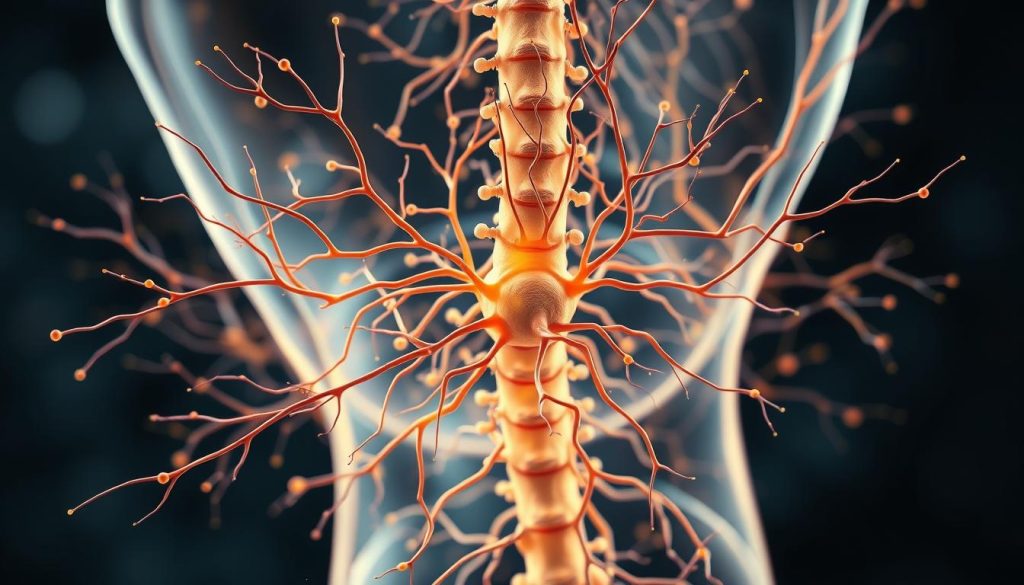
| Effect | What happens | Short-term benefit | When to choose |
|---|---|---|---|
| Parasympathetic activation | Lowered heart rate and calmer autonomic system | Immediate drop in anxiety and steadier breathing | After busy days or before sleep |
| Circulation boost | Increased blood flow to muscles | Faster tissue healing and less stiffness | Post-exertion or desk-related tightness |
| Brain chemistry | More serotonin and dopamine | Improved mood and reduced pain perception | When mental balance and energy matter |
| Cumulative adaptation | System becomes easier to relax over time | Quicker recovery between sessions | Regular, scheduled visits |
For practical tips on pressure, technique, and session goals, see this guide on professional methods: massage techniques and tips.
Leave Stress and Fatigue Behind with Massage in the European Side
Post-treatment drowsiness is common because your nervous system shifts from alert to repair. This change slows heart rate, lowers blood pressure, and reduces pain signals. You may find yourself quietly drifting toward sleep as healing starts.
Why you feel sleepy after sessions: Your healing response at work
After focused work, especially deeper pressure, your body increases repair activity. You may experience fatigue and lightheadedness for a short while.
“Feeling sleepy after therapy is a sign your system moved out of fight mode and into recovery.”
When deep techniques equal deep rest: Understanding post-massage tiredness
Many people notice that deeper release requires extra recovery. Expect initial tiredness that often clears by the next day into restored energy and lighter feelings.
- You might be falling asleep after a session; embrace short rest to let healing proceed.
- Hydrate, eat lightly, and avoid heavy training for 24 hours to protect recovery.
- Plan afternoon or evening appointments so natural drowsiness supports a good night’s sleep.
- Share any prolonged fatigue with your therapist so pressure and pacing can be adjusted.
| Sign | Why it happens | Simple action |
|---|---|---|
| Drowsiness | Parasympathetic shift and lowered heart rate | Rest 20–60 minutes after session |
| Muscle tiredness | Repair processes after deep release | Hydrate and gentle walking |
| Clearer energy next day | Tissue recovery and brain chemistry changes | Light activity and sleep |
Popular Massage Types You Can Book on the European Side—and Their Effects
Choose a massage type based on how much targeted release your body needs and how quickly you want to recover.
Deep tissue uses firmer pressure to reach deeper layers. It can lower heart rate, boost circulation, and ease muscle tension. Expect more recovery time and possible next-day soreness.
Swedish offers long, smooth strokes for broad relaxation. It calms breathing and steadies heart rhythm. This type is ideal when you want full-body calm and gentle recovery.
Trigger point therapy targets local knots to reduce referred pain and restore movement. You may feel focused pressure but gain better daily range of motion.
Reflexology and scalp work stimulate specific zones and nerve endings. These techniques can influence systemic relaxation and help ease pain or head/neck tension.
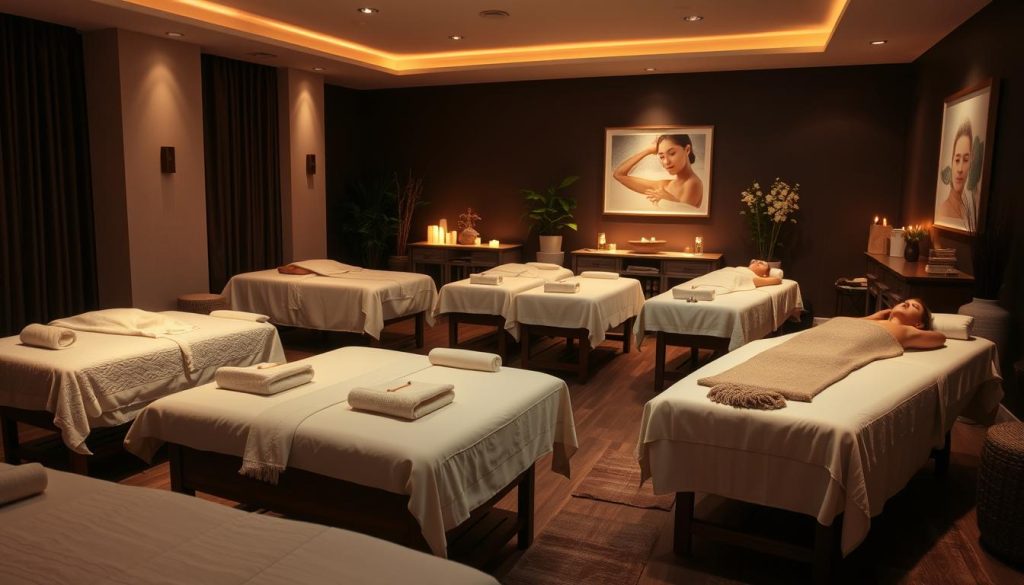
- Discuss pressure preferences so sessions ease pain without overshooting comfort.
- Combine Swedish with targeted trigger point work for calm plus focused relief.
- Plan post-session care: hydrate, light stretch, warm shower to help your muscles integrate changes.
- Track which type reliably eases muscle discomfort so your therapist can repeat effective approaches.
| Type | Primary pressure | Main effects | When to book |
|---|---|---|---|
| Deep tissue | Strong | Lower BP, improved circulation, reduced muscle tension | Stubborn knots or chronic tightness |
| Swedish | Light–moderate | Full-body relaxation, calmer heart rate | Recovery days, relaxation |
| Trigger point | Targeted | Release referred pain, restore movement | Localized pain or limited range |
| Reflexology / Scalp | Light–moderate | Stimulate nerves, systemic calm | Head/neck tension, foot-related pathways |
For a broader list of options and benefits, see 20 common types and benefits.
Reflexology Essentials: Feet, Nerve Endings, and Whole-Body Healing Signals
By working small reflex points on the feet, a practitioner seeks to trigger wider healing signals across the body. This practice traces to ancient China and Egypt and later evolved into zone therapy. Dr. William H. Fitzgerald popularized the 10 vertical zones in 1917.
Origins and zones
Reflex maps show how pressure on the feet, hands, or ears links to distant organs. You learn to target specific areas so local touch creates systemic responses. Sessions stimulate thousands of nerve endings and may improve circulation.
Benefits you can feel
Reported effects include better circulation, lifted energy, easier sleep, and faster recovery. Reflex work may help manage pain and speed post-workout recovery when used alongside other care.
Side effects and cautions
You may notice short-lived detox-like reactions such as nausea, tenderness, tiredness, or mild dehydration as your body clears toxins. Hydrate before and after sessions.
“Reflexology supports health but does not replace clinical care.”
- Tell your practitioner about chronic conditions—especially adrenal fatigue—so pressure can be adjusted.
- Seek medical advice for serious or persistent symptoms.
- Use reflexology as a complementary tool alongside regular wellness habits.
For practical foot-focused guidance, check this foot reflexology guide.
Head and Scalp Massage: A Direct Route to Calm, Focus, and Relief
A focused head and scalp routine can shift your mood and sharpen how you think within minutes. Small strokes near nerve-rich zones often create a stronger sense of calm than body-only sessions.
Your mental state: Reduced anxiety, less boredom, and brighter mood
Clinical notes from a small study showed fewer depressive symptoms, lower anxiety, and more liveliness after head work. You may notice clearer thinking as emotions settle and your energy evens out.
Circulation to the scalp: Supporting follicles and easing head tension
Increased blood flow to the scalp can ease tightness around the occiput and temples. That circulation may also support healthier scalp conditions and reduce tension that feeds headaches.
ASMR-style responses and binaural beats: Tingles, attention, and memory gains
Many people report ASMR-like tingles during scalp work. Paired with binaural beats, sessions have been linked to better attention and memory in small samples.
“Targeted touch near the skull can produce rapid relaxation and clearer focus.”
- Try oil-free options if you must return to work right after a session.
- Combine scalp sequences with neck and upper-back work for lasting relief.
- For a deeper overview of what a head session does, see this head spa treatment guide: head spa treatment.
Make Results Last: Post-Massage Recovery and Smart Habits
Small choices after a session can extend healing and cut the chance of next-day soreness. Follow a short, practical routine to protect gains and speed recovery.
Hydration, light movement, warm baths: Simple steps to support healing
Hydrate before and after to support circulation and help your body clear toxins.
- Keep water nearby and sip frequently to aid removal of metabolic byproducts and toxins.
- Choose light movement—walk or gentle mobility drills—to keep flow without stressing tissues.
- Take a warm bath or shower to extend muscle softness and deepen sleep.
- Eat simple, nutrient-dense meals to fuel healing and avoid heavy, greasy food that can slow recovery.
Listening to your body: When rest beats workouts and how to pace recovery
If you feel sleepy after a session, rest. Pause hard workouts for 12–24 hours after deeper work so your body integrates changes and regains steady energy.
“Use a short wind-down routine—low light and slow breaths—to lock in calm.”
Track responses to pressure and duration so each visit is more effective. Remember: massage helps most when paired with consistent habits. Seek medical advice if you notice unusual swelling, sharp pain, or symptoms that persist beyond a day or two. For more on professional care, rejuvenating powers of massage therapy.
Finding the Right Massage Therapist on the European Side of Istanbul
Choosing a practitioner starts by matching their skills to the areas you want treated. A short call or message can save time and guide expectations before you arrive.
What to ask: training, technique, pressure, and hygiene
Ask about formal training in Swedish, deep tissue, trigger point, reflexology, and head/scalp techniques. Confirm certifications and how long they have worked with your specific goals—recovery, pain relief, or calm.
Discuss pressure preferences at booking. Name the areas you want focused so your session time is used effectively.
Verify hygiene, draping, and intake procedures. Review any forms and note medications, injuries, or sensitivities so care is tailored and safe.
Balanced care: therapy plus professional medical guidance
Massage therapy supports recovery but does not replace diagnosis. If you manage complex symptoms, align sessions with your doctor’s plan and seek professional medical advice when needed.
“Therapists should refer you to professional medical support when issues exceed their scope.”
- Look for clear aftercare instructions and follow-up options.
- Choose studios with transparent pricing and therapist bios so you can compare styles.
- Consider trial sessions with two providers to find who helps you best.
- Favor practitioners who track outcomes and adjust plans to help people make steady progress.
For local listings and therapist profiles, check this guide: butik masaj therapist guide.
Conclusion
A clear plan helps you use touch-based care so results compound over weeks.
You can reset your body, calm your brain, and ease muscle tension by picking the right therapy type and keeping a simple routine.
Expect post-session drowsiness; it shows your system shifted into repair. Hydrate, rest briefly, and move gently to aid blood flow and reduce next-day soreness.
Use reflexwork and targeted techniques to address problem areas, while treating whole-body needs to improve overall health. Keep track of how you feel and ask for adjusted pressure when needed.
For local therapist options and therapeutic massage info, see therapeutic massage info. Seek medical advice for persistent or severe pain.
